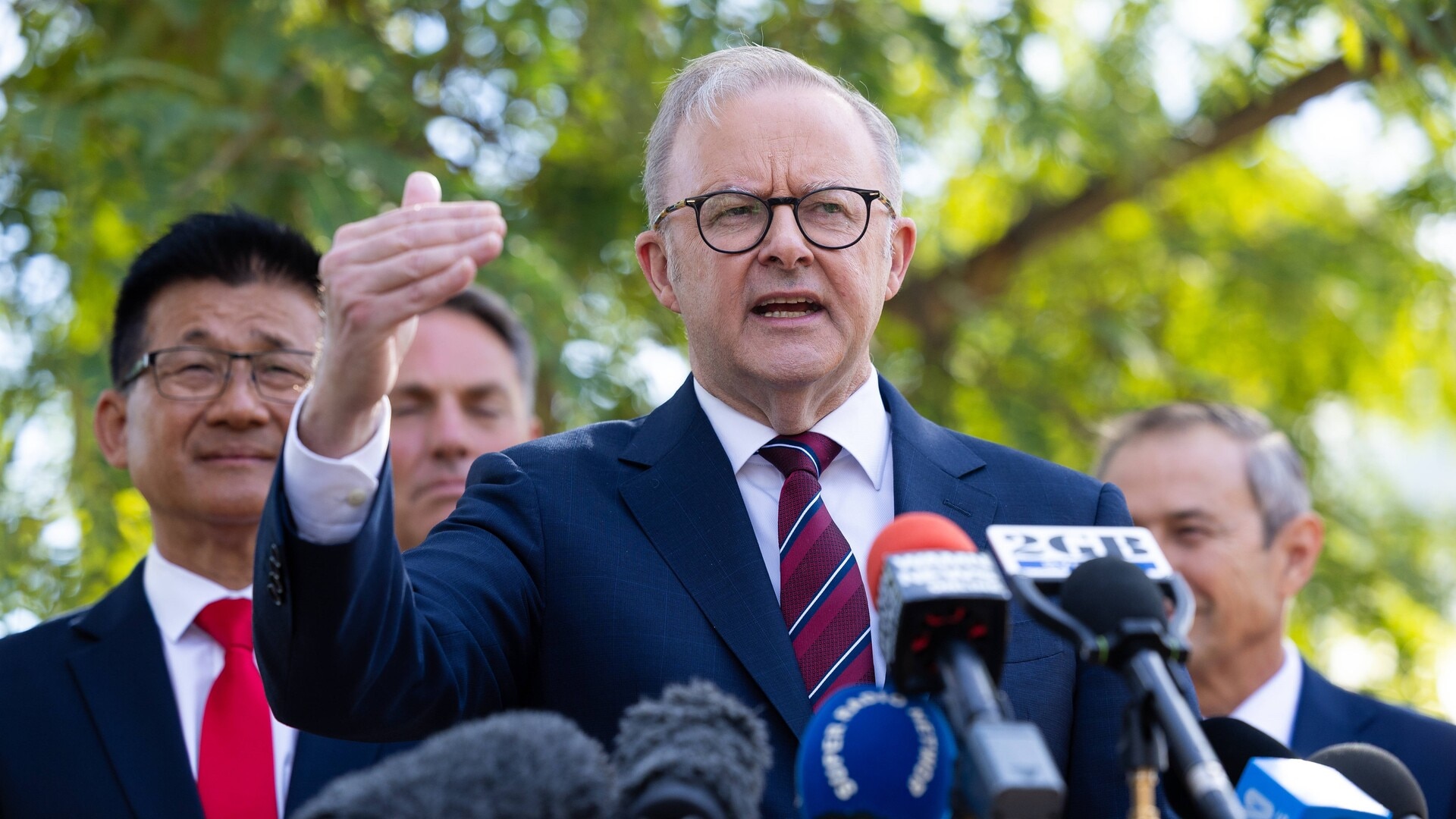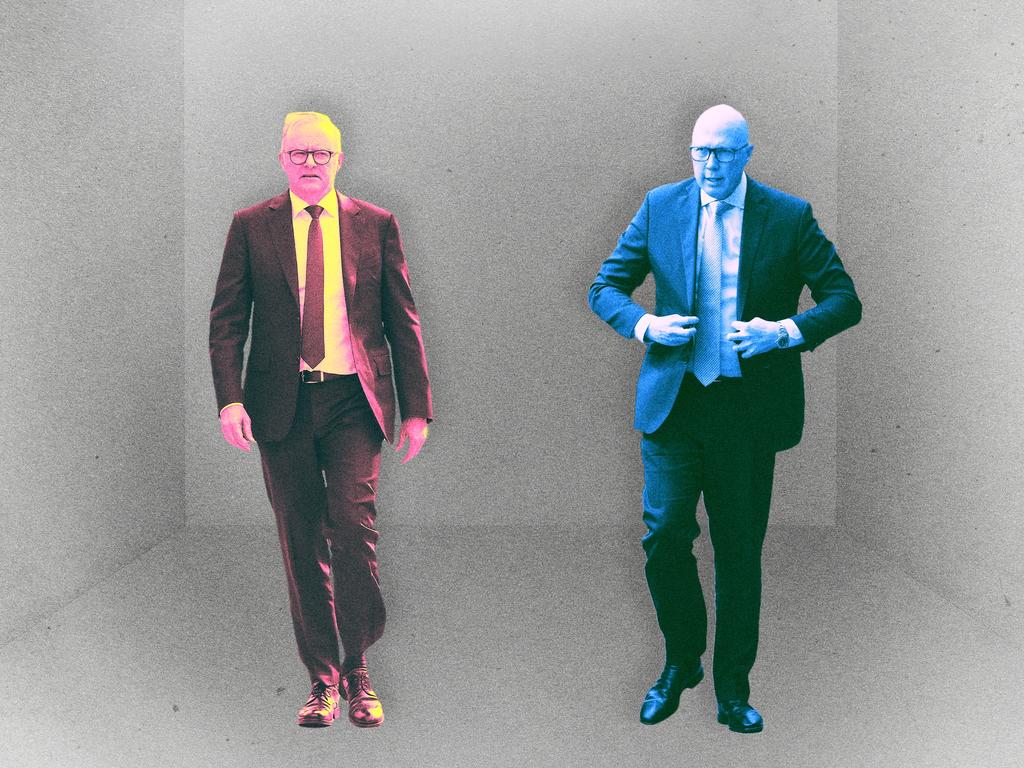What counts as success? It’s all in the Seat-o-Meter
A clear majority victory for either major party will settle all the arguments and quell leadership speculation, but an expected minority government will mean all sorts of calculations and measurements will be made to determine the fate of the leaders, parties and the nation.
All during the election campaign Anthony Albanese has talked confidently about a majority Labor government, no deals with the Greens, putting No.1 in the ALP box, staying as leader for the full term, facing the reality of not having control of the Senate and governing to implement a second-term agenda.
On Wednesday, the Prime Minister declared it was his intention to hold Labor’s 78 seats and to win more seats from the Coalition and Greens, thus setting his own benchmark of 78-plus seats, with an outright majority of at least four seats clear of any need for teal deals or Green shading.

On Thursday, after a public poll appeared suggesting Labor would clearly win and get up to 85 seats after a record Liberal bloodbath, Albanese said Labor had “a mountain to climb. And it will be difficult for Labor to be re-elected”.
Suddenly, Albanese was faced with pulling back the dangerous expectations of a Labor government with a big majority because having predictions of an easy victory 48 hours out from a poll can lead to a backlash by voters who may have been undecided but don’t want an unassailable government or because supporters feel it’s in the bag and don’t turn up to vote.

Ironically, since January Albanese has done all he can to confidently create an expectation, into the last days of the campaign, of a stand-alone Labor government with a majority that did not require support for independents and particularly the toxic Greens.
Albanese has insisted people “put a No.1 in the box for Labor” to combat the politically dangerous assumption that the likeliest outcome of the election will be a Labor-Greens-teals coalition and he has had to project the idea that Labor will win a majority and not have to deal with the Greens or slippery teals.
But while it is clear to see why Albanese has been talking up his book, the danger for him is that he has created the expectation, with hugely optimistic published national polls, of a Labor majority government and anything less will be a failure. Indeed, Albanese was asked on Thursday if Labor going from a majority government to a minority government would be a failure.
Given the low primary votes for the major parties, the number of independents and minor parties, the impossibility of predicting, let alone corralling, preference votes and a sense of political chaos, a minority Labor government is the likeliest outcome of the 2025 election.
Albanese’s response was noncommittal and avoided suggesting minority government was a failure: “Oh, look, what I’m about is maximising our position on Saturday. We take nothing for granted,” he said.
Albanese’s personal view in seeking vindication for his lifetime achievement of becoming prime minister and getting re-elected is essentially that if he’s still in the Lodge next week then he’s vindicated.
But it is here that permutations of the actual result become crucial for Albanese and the other party leaders – Liberal leader Peter Dutton, Greens leader Adam Bandt, Nationals leader David Littleproud and the opaque backers of the Climate 200 teal independents.
This is where the post-election politics of leadership, party direction, policy assessment and success in the next term will be determined.
There’s a simple Seat-o-Meter that can determine what success is, what’s failure, what decides a leader stays on and what policies are trashed or treasured.
Of course, if Albanese leads Labor to the predicted 85-seat victory he will be hailed as a wily political genius, have a mandate (although little pronounced policy), be destined to overtake even more prime ministers in the longevity stakes after leapfrogging Gough Whitlam and Malcolm Turnbull this week, and dismiss those lurking leadership pretenders who want him to retire to his NSW central coast clifftop mansion.

Likewise, such a victory and the suggested record low 47 Coalition seats would mean the Opposition Leader was finished: Dutton would be a dead duck and his Nationals partner would be equally lifeless.
Bandt, by definition, will have kept his little band together and the teals would cement their spots as independents and could even consider party status to legalise their arrangements.
Even if Albanese achieves only his own aim of between 78 and 80 seats, expanding his majority to four or five seats, his position would be secure to the point of deciding his own future.
But here’s the catch on what is success or failure. The ALP has rules that dictate a leader who loses an election must vacate the position.
There are some within Labor who regard going from majority government into minority government as a loss, and the size of the necessary support from independents will further fuel doubts.

This Seat-o-Meter has even more profound ramifications for Dutton since he has never had any real expectation of forming a majority government and the measure of his leadership security will be more closely examined.
For Albanese the net loss of, say, six seats would require the support of only four independents, a number he believes he could achieve easily without requiring too many contortions on controversial policies. Part of that confidence is that the Greens already have declared they will not support Dutton and so have effectively given Labor their support without a deal.
If Albanese ends up with 72 seats he can argue it’s a manageable government that won’t have to make too many dramatic deals – such as Julia Gillard’s carbon tax for the Greens’ support in 2010. This would prevent an immediate leadership destabilisation but it would be inevitable.
For Labor, winning only 70 seats would put the Coalition within negotiating range and require a larger cohort of independents with even bigger demands. This would be seriously difficult for Labor.
This also would mean that Labor would have lost seats that the Coalition has targeted such as McEwen, Hawke, Gorton and Aston in Victoria; Solomon, in the Northern Territory; Bullwinkel and Tangney in Western Australia (which Albanese has visited regularly and into the last week of the campaign); and Paterson, Werriwa and Gilmore in NSW.
For Dutton, the management of expectations is the opposite of Albanese – to keep Coalition voters interested, the Liberal leader has to tell people he’s not going to fail disastrously but not inflate the forecasts to unrealistic levels.

Looking to keep spirits up in the face of being written off, Dutton sought to counter the public polls with the suggestions that there was more happening at the grassroots level than was being displayed publicly and there would be surprises.
“We’ve got some amazing candidates who are going to win seats that aren’t even on the radar at the moment,” he said on Thursday. “And the published polls don’t go into the details seat by seat.
“In NSW, in Victoria, I think there are surprises in WA and I think there’s a potential surprise in Queensland as well. And there’s an enormous amount of work that’s been going on at a micro level.”
Of course, similar to a big win for Albanese, a big win for Dutton would turn him into latter-day Robert Gordon Menzies with an iron authority and no leadership contenders. But realistically, even with some surprises, the very best Dutton is expecting is about 70 seats with the likelihood of between 65 and 68.
A Coalition with 65 seats would mean Dutton had added a net 10 to the tally and would be justified, as a first-term Opposition Leader, to seek to lead the Liberals through the next term as they acquire experience, develop more policy and gain more talent.
Such a tally also would mean, and require, that Dutton had regained some of the teal seats lost in the Scott Morrison defeat of 2022, with the most likely being the Victorian seats of Kooyong and Goldstein held by Monique Ryan and Zoe Daniel, respectively, and Kate Chaney’s seat of Curtin in WA.
Another surprise Dutton may count on is the Greens’ Brisbane seat of Ryan – once a blue-ribbon Liberal electorate – with its neighbouring Greens electorate of Brisbane to go to Labor. With at least two losses and no gains, Bandt’s Greens would be cut in half in the House of Representatives.
Littleproud, who has kept a low profile as he campaigned in the regions, could well bring out his own surprise of taking Bendigo from Labor as part of the disaffection with the Victorian ALP. On a much-reduced scale a one-seat gain for the Nationals and holding on to its other regional assets would help Littleproud and the Coalition partnership a great deal.
A clear majority victory for either major party will settle all the arguments and quell leadership speculation, but an expected minority government will mean all sorts of calculations and measurements will be made to determine the fate of the leaders, parties and the nation.






To join the conversation, please log in. Don't have an account? Register
Join the conversation, you are commenting as Logout